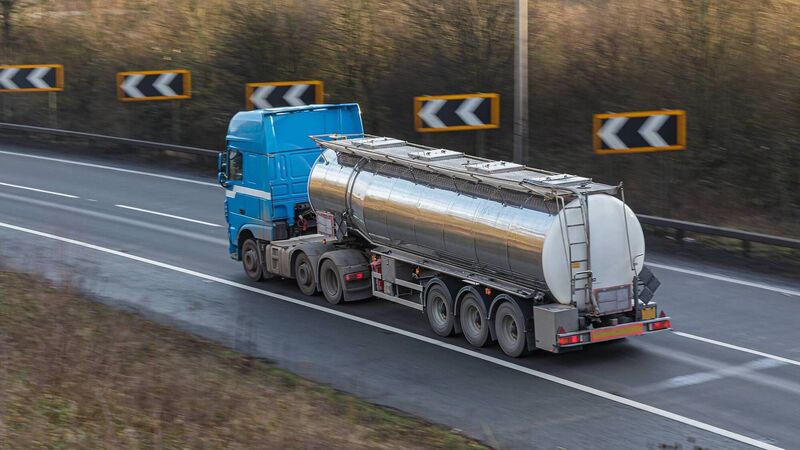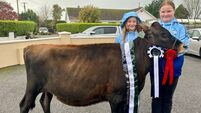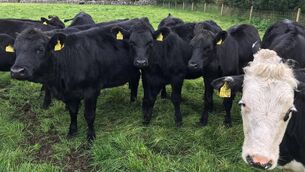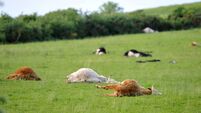Paula Hynes: It’s time to decide — volume game or value game for Irish dairy?

Ireland may have somewhat of a low-cost dairy system; but now we also have the second-lowest milk price in Europe at the moment. File photo
We returned from the sunshine and sea to rather cold, crispy weather, which was a little bit of a shock to the system given the 20-degree difference in temperatures. However, the brief cold snap was needed as it had been unseasonably mild in Ireland prior to that.
Shorts and t-shirts were quickly replaced by overalls, wellies and woolly hats as we got straight back to work, and it really was a treat to look around the farm and see how smoothly Becky had the place running. She always thrives on responsibility, and there was no big workload to catch up on.
A busy week did lie ahead, however, as Becky had a sync program running while we were away, so there was a group of cows and heifers to be inseminated. Thankfully, the heifers which we served on natural heats haven’t repeated.
We also had our Bord Bia audit at the end of the week. With the audit lasting 18 months, it gives the auditors a great opportunity to see how the farm is operated at different times of the year.
With both of us having travelled around the world speaking at farming events, we have seen first-hand how Bord Bia is the envy of farmers and the agriculture industry globally. The auditing system commands great respect and is so well-trusted that it opens doors for Irish food and beverages quickly.
Many of us as farmers see the on-farm audit as somewhat of a headache. Other countries have a similar auditing system, but none are as farmer-friendly and detailed as what we have here in Ireland. It is a way of telling our story around the world and verifying that, yes, Irish farmers are extremely good at what they do and also continually try to improve.
Agri Audits always manage the paperwork side of things for us, we input data on HerdPlus, HerdApp and Agri Audits have direct access to that, along with access to Agfood, and they liaise with our vet and feed mill.
It is such a streamlined system of managing paperwork and is easy for the auditors to access any data they need. As always, they got an A+ for keeping our homework in order.
It is more crucial than ever that we have an auditing system and a respected brand like Bord Bia to open doors and advertise Irish food, as dairy markets continue to freefall and European dairy markets seem to be absolutely catastrophic at the moment.
Global production is high and Europe has had a really strong year of production. The US dairy herd is the highest since 1993 at 9.85 million cows, while the US had strong markets for their cheese, their increased butter production has dragged down global butter markets; however, European cheese production has dragged down cheese prices.
US dairy exports have jumped 28% this year. Soya prices have jumped in the last number of weeks, which may hamper US dairy production, as the price of beef is so high. There is a hope globally that the US dairy herd may cull numbers to capitalise on beef prices as dairy markets slump. Analysts feel the only way markets will rebound is if there is a global decline in production.
In Europe, dairy production only increased for Ireland by 1%, however, Belgium and the Netherlands saw increases of nearly 7%, the UK is up 6% with France increasing the same. Spain and Portugal are the only European countries which have shown a decline.
Ireland is the largest producer of butter in the EU and while Dutch butter prices dropped to €4,830/t this week, the bad news for Irish dairy farmers is Irish butter is now making less than €4,000/t. The dairy traders are ruling the roost and they certainly won’t pay €4,000/t for Irish butter with delivery in December, they know we’ve got the stocks and they will set the price on their terms.
Ireland may have somewhat of a low-cost dairy system; but now we also have the second-lowest milk price in Europe at the moment.
In the short term, we will be granted a nitrates derogation as Ursula and the EU don’t want to run the risk of being branded as destroying the Irish rural economy, but the Irish dairy industry is at a crossroads and we need to make a decision going forward together; do we continue to pursue a low-cost dairy system which commands a dismal price when markets are weak?
We, as Irish dairy farmers, can adapt our cow type and continue on our grass-based system with a cow that can also adapt to concentrate feeding when milk prices are high.
Dairy production globally is a volume game anyway. But if we adapt our cow type on farm, then our dairy processors need to adapt also.
Tirlan have invested in whey protein processing; it is the only product that sells at the moment. Aurivo and Dale Farm are looking to amalgamate, and Ornua shouldn't stand in their way because, realistically, we have too much processing capacity in Ireland.
With all due respect to my own processor, they have a big decision to make: add value or join forces. 2030 will be very different times for Irish dairy farmers, and if we don’t accept that now, we will still be at the bottom of a weak global dairy market.
Read More












